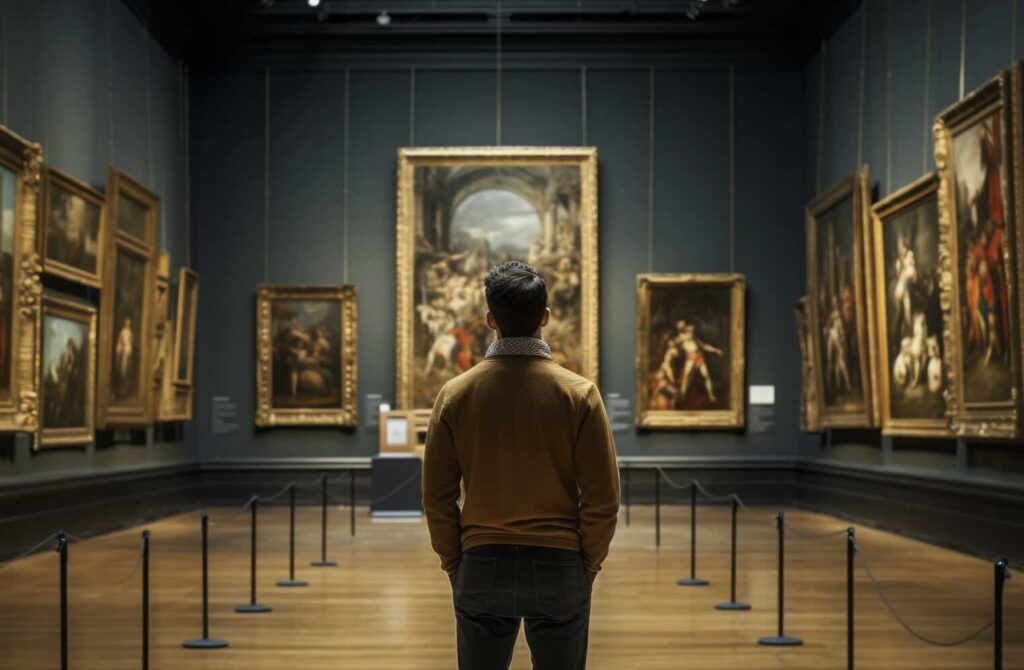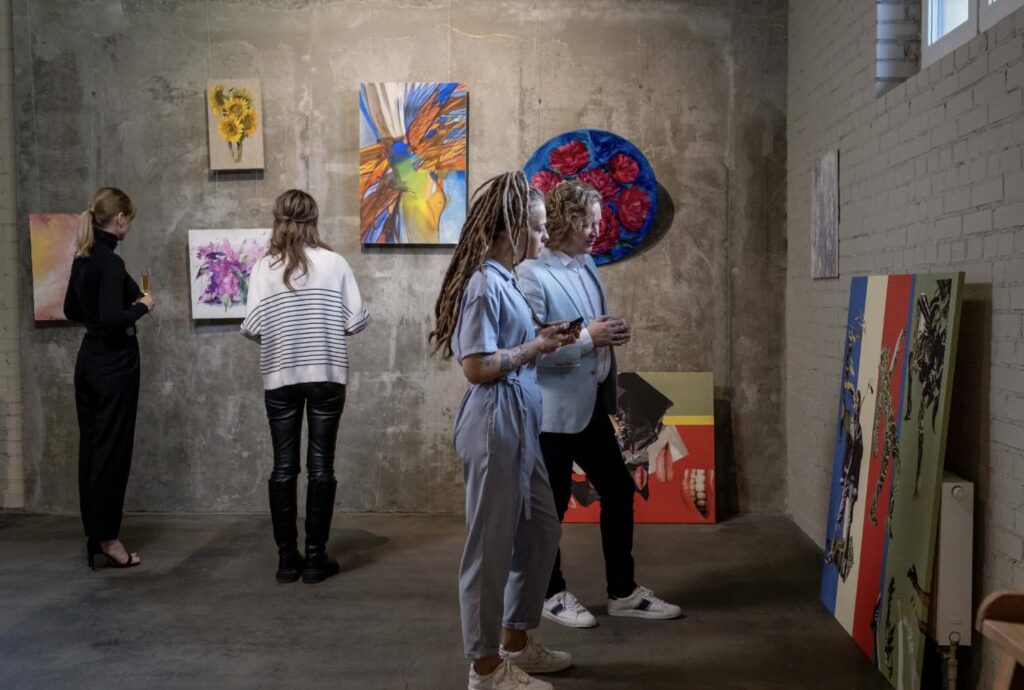In almost every major city in the world, you will find at least one major art museum. Even in small towns around the world, you may find an art museum. That is because art museums have an essential role in serving the public and the art world.
An art museum will help to collect and preserve works of art. They also interpret the art and help to educate us all about art. Many art museums will have programs that will allow you to even experiment with different types of art. The core role of an art museum is to inspire us about art.
Table of Contents
- The Crucial Function of Art Museums in the Global Art Landscape
- Frequently Asked Questions
- Related Questions
The Crucial Function of Art Museums in the Global Art Landscape
From the bustling streets of metropolitan hubs to the quaint lanes of small towns, art museums emerge as pivotal landmarks. Their ubiquitous presence across the globe underlines a profound significance in both public engagement and the broader art industry. Art museums are not just repositories of artistic creations; they are dynamic centers for the conservation, interpretation, and education of art.
These institutions often extend beyond passive exhibition, offering interactive programs that invite individuals to delve into diverse artistic practices. At their heart, art museums are beacons of inspiration, kindling a deeper appreciation and understanding of art in people from all walks of life.
Many art museums also see themselves as a way to support inspiring and upcoming living artists. They will do this by exhibiting their works of art and purchasing some of their art.
Art Museums Collect Works of Art
One of the main things that an art museum does is to help collect works of art.
Sometimes a curator will collect a work of art because they want it for a specific exhibition. Other times, museums may have artwork donated by either the artist or somebody else.
In some circumstances, the art museum may even purchase some art because it will help attract people to visit their art museums. But one of the main functions of an art museum is to collect art.
Ideally, they should collect the art for public view, but in reality, a lot of art is in storage, and the artwork is rarely exhibited or seen.
Only 10% of Mark Rothko’s art is on display; most are in storage. Georgia O’Keeffe has 35% of her work on display, with most in storage. Pablo Picasso has over 45% of his work in storage.
There could be many reasons why an artist’s work is in storage, but usually, it is due to space and public interest. It could also be due to the condition of the paintings, and the museum does not want to put them on display for fear that the artwork could get destroyed.

Art Museums Preserve Works of Art
Along with collecting works of art, the museum’s role is also to preserve works of art.
Museums are set up as a place where art can be preserved and not be damaged.
Some ways that museums will preserve works of art
- Climate Controls – The wrong climate can damage a painting. Some museums have special glass boxes to protect artwork; some very delicate artwork may need to be protected from the temperature and moisture of the air.
- Inventory – The art museum also acts as an inventory management system for artwork. Artwork is tagged, categorized, and tracked. This helps them to protect it from getting lost.
Some art pieces can be easily destroyed if the art is moved around. That is one reason why a museum will not allow many art pieces to be moved off of its premises.
Art Museums Interpret Works of Art
Art museums are filled with experts, so they interpret the works of art in the museums.
The role of the art experts or curators is to interpret the philosophy and sociology of the art. They will look at some of the traditions from history and display the artwork where people can learn about the art and its content.
The curator will help to give a historical and political narrative of the art and then categorize the art accordingly.
The art curator would usually write the interpretive materials about the artwork, such as the labels and other documents. The museum and the curator are experts on the works of art on display in their museum.
Art Museums Educate Us About Art
The primary role of an art museum is the educate us about art. Many of the world’s finest museums have taken this to another level, and they provide an area in the museum where people can also interact with art.
For example, the Milwaukee Art Museum, which is in my town of Milwaukee, Wisconsin, has some beautiful exhibits, but they also have an area where people can learn and play. This area is set up expressly with programs and resources to educate school-aged children and school groups.
The goal of the art museum for the school groups is to come to the museum and have a day to learn about art and even experience art. They will have activities and other things to help inspire and teach the children about art.
With the outbreak of the COVID pandemic, many art museums have also adjusted their programs to include virtual learning for both children and adults.
Art Museums Inspire Us About Art
An art museum also has the role of inspiring about art. The art museums do this through their educational programs, written materials, museum guides, discussion groups, and other programs.
That is why some art museums will give an in-person tour, and others will have a headset where you can take your museum tour. Today, many art museums are also providing virtual tours to view the museum’s artwork at home.
I love the idea of virtual tours as you can essentially be anywhere in the world and see some of the world’s finest museums – virtually. Of course, it is never the same if you visit in person, but if you cannot travel or you are housebound, it is a great way to experience and be inspired by art.

Art Museums Support Artists
Many museums also support some living artists. They may see their role as helping to support artists who are alive. They may have an exhibition about the artist and their artwork; they may invite the artist to give lectures.
When art museum shows the artist’s artwork, they are also supporting that artist. Furthermore, many museums will buy artwork from artists they consider inspiring or critical.
Another role of an art museum is to support artists and to help the artistic community.
If you love art, then take the time to visit your local museum. Not only will you help support them in their many goals, but you will also experience and learn about art.
A visit to an art museum can help inspire you with your artistic pursuits.
Frequently Asked Questions
Why are art museums important in the art world?
Art museums play a crucial role in preserving and collecting works of art, contributing to the overall cultural heritage. This FAQ explores the significance of this role.
How do art museums contribute to art education?
Learn about the educational initiatives undertaken by art museums and how they help the public understand and appreciate various forms of art.
What is the primary function of art museums in interpreting art?
Delve into the ways in which art museums interpret art, providing insights into the historical, cultural, and artistic contexts of the works they display.
How do art museums inspire the public about art?
Explore the ways in which art museums serve as inspirational spaces, fostering a love for art and creativity among visitors.
Why do art museums often feature experimental art programs?
Understand the importance of experimental art programs in art museums and how they contribute to the exploration of diverse artistic expressions.
What role do art museums play in the preservation of cultural heritage?
Explore the ways in which art museums contribute to the conservation and preservation of artworks, ensuring they are passed down through generations.
How do art museums contribute to the cultural identity of a city or region?
Learn about the impact of art museums on the cultural identity of a place, as they often become landmarks and symbols of artistic expression.
In what ways do art museums support emerging artists?
Discover the various ways in which art museums support and promote emerging artists, providing them with platforms to showcase their work.
How can individuals benefit from participating in art museum programs?
Explore the educational and personal enrichment opportunities offered by art museums, including workshops, lectures, and interactive programs.
What challenges do art museums face in fulfilling their roles in the art world?
Examine the challenges that art museums encounter, such as funding issues, ethical considerations, and the changing dynamics of the art world, in carrying out their essential functions.
Anita Louise Art is dedicated to art education, great artists, and inspiring others to find and create their art. We love art that uplifts and inspires. #ArtToMakeYouSmile! #ArtToMakeYouHappy!
If you are interested in seeing any of my art, you can find out more by clicking here. If you are interested in what inspires me and my paintings, you can discover more by clicking here.
We have a free newsletter and would love you to be part of our community; you can subscribe to the newsletter by clicking here. If you have any questions, I would be happy to talk to you. You can reach me, Anita, by clicking here.
Subscribe to our Anita Louise Art YouTube Channel filled with great videos and information by clicking here.
Join us for our podcast “5 Minutes With Art.” Spend just 5 minutes a week with us to discover and learn about great art and artists. You can find out more about our podcast by clicking here.
Related Questions
How Do Art Museums Choose What To Exhibit?
Art museums choose what they want to exhibit because of costs, budget restraints, and space restraints. They want to show art that the public wants to see and exhibitions the people are willing to pay an entrance fee to attend. A museum also exhibits those works of art that align with its mission and vision.
By clicking here, you can learn more by reading How Do Art Museums Choose What To Exhibit?
The Brigham Young University Museum of Art In Provo, Utah
The Brigham Young University Museum of Art is a world-class art museum located in Provo, Utah. The museum exhibits artwork from many well-known artists. The Brigham Young University Museum of Art is one of the largest and best-attended art museums in the Mountain West.
You can discover more by reading The Brigham Young University Museum of Art In Provo, Utah by clicking here.


